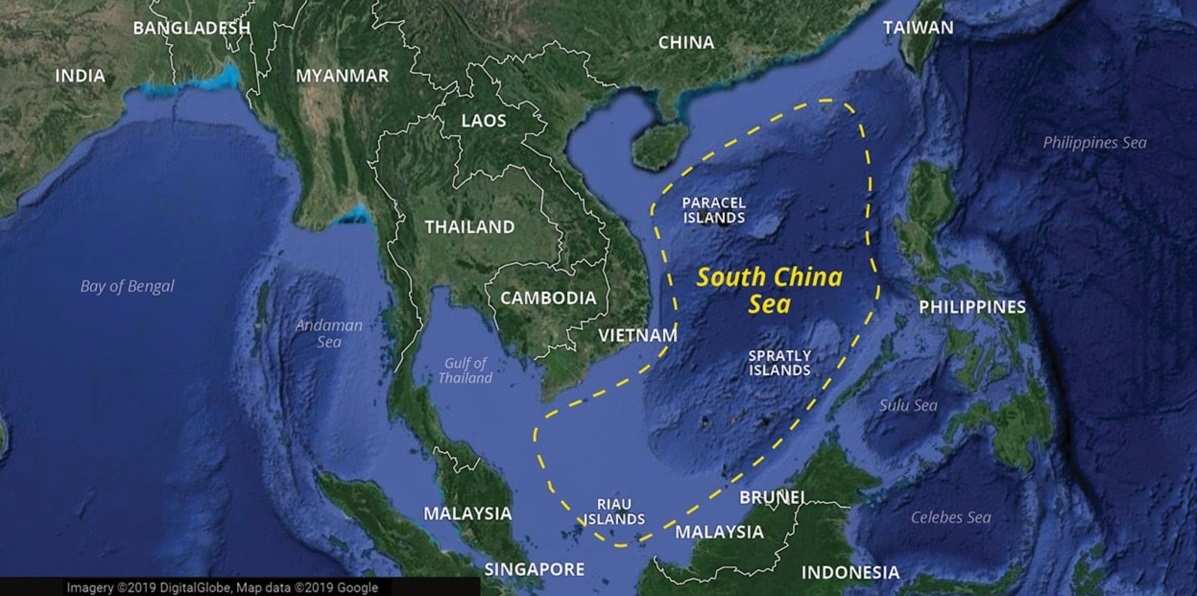Guided by its vision of reviving the glory of the Middle Kingdom China under its President Xi Jinping has been on an assertive and belligerent course. Under Xi, China has jettisoned the policy of peaceful rise and has embraced a more muscular approach to its domestic policies in general and foreign policies in particular. In that context, China has been engaging in wanton irredentist claims with regard to its neighbours across various regions be it the South and East China Seas, Taiwan Strait, the Indo-Pacific and South East Asia. In this context, China’s interference in South East Asia has been particularly notable.
Under Xi China has shed the image of a good responsible neighbour and has been quite bellicose with regard to South East Asia. The geo-political region which comprises Vietnam, Indonesia, Brunei, Singapore, Malaysia, Philippines has been heavily wary of China’s growing interference. China has been engaging according to Robert D Kaplan’s book Asia’s Cauldron- The South China Sea and the end of a stable Pacific argued that countries like Vietnam, Indonesia, Malaysia and the Philippines have been at the receiving end of Chinese aggression. Vietnam is particularly noteworthy. China which actively supported the communist regime of Ho Chi Minh during the Vietnam War of the 1970s and played a crucial role in helping the establishment of the communist regime is now a strong adversary of China.
Conflicts between China and Vietnam have ranged from strong US support to Vietnam to China’s claims over the Spratly and Paracel Islands which Vietnam claims as its own. Kaplan notes that Vietnam has been facing a gargantuan neighbour as much as 15 times its size. Other concerns emanate from China’s interference in the exclusive economic zones of other economies particularly the Philippines; the Chinese Navy (PLAN) regularly conducts anti-piracy operations in this region. However, the Philippines has complained to the United Nations on regular occasions that the Chinese Navy has been responsible for regularly sinking its fishing vessels and has on numerous occasions invaded its exclusive economic zone (EEZ). One of the most contentious issues has been China claiming all territory of the so-called 9-Dash Line based on its old maps. The Permanent Court of Arbitration had in a landmark 2016 ruling based on the United Nations Convention of the Law of Sea (UNCLOS) rejected China’s irredentist claims in the South China Sea. However, China has rejected its ruling arguing that the PCA has no locus standi on the matter and China doesn’t recognize such rulings.
China’s interference in South East Asia has further increased thanks to its debt trap diplomacy manifested in the Belt and Road Initiative (BRI) of which South East Asia is an integral part. Countries like Brunei, Indonesia, Malaysia etc are a part of the BRI. However, in recent years there have been concerns about the opaque nature of the projects and the high-interest rates charged by the Chinese banks. Further, the way in which China has been trapping countries like Sri Lanka, Maldives, and Djibouti in debt has caused countries like Malaysia to cancel certain projects, further the members of the ASEAN have been strongly asserting the right to do a review of the BRI projects.
Conclusion
Geopolitics is all about changes. China’s foray into South East Asia is a wake-up call for other great powers like India and USA to do more to halt China’s growing influence. The US had already started that with its pivot to Asia initiative to cement US commitment to its South East Asian allies. However, it fizzled out after the end of the tenure of the Obama administration.
As the US looks increasingly towards the Middle East and South Asia it is up to India to take on the mantle of containing China in South East Asia. India can do so by promoting the intake of new members in the Indo-Pacific Economic Framework (IPEF) and by incorporating new members in the Quad. India also has deep civilisational links in South East Asia and must make use of its people’s diplomacy to bolster its influence in the region. Further India must step up its economic ties with the region to ensure that it can eclipse China’s increasing interference in South East Asia.
Title image courtesy: https://www.voanews.com/
Disclaimer: The views and opinions expressed by the author do not necessarily reflect the views of the Government of India and Defence Research and Studies





